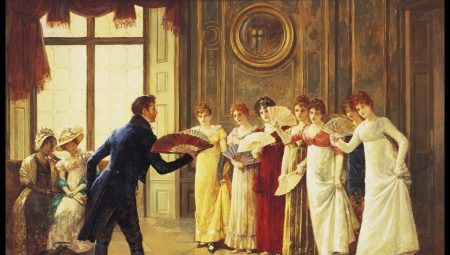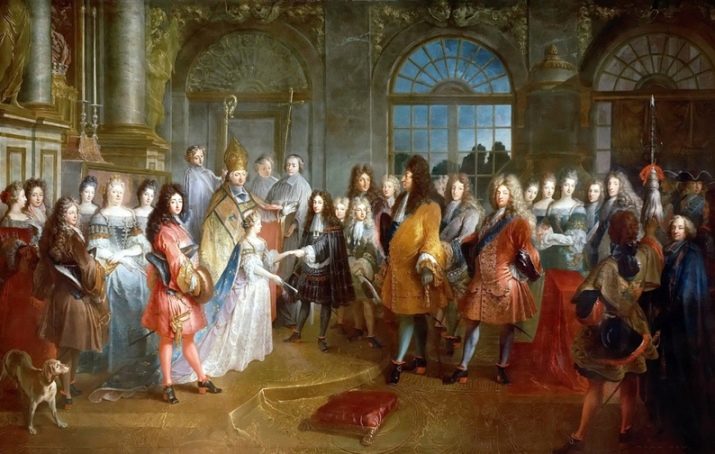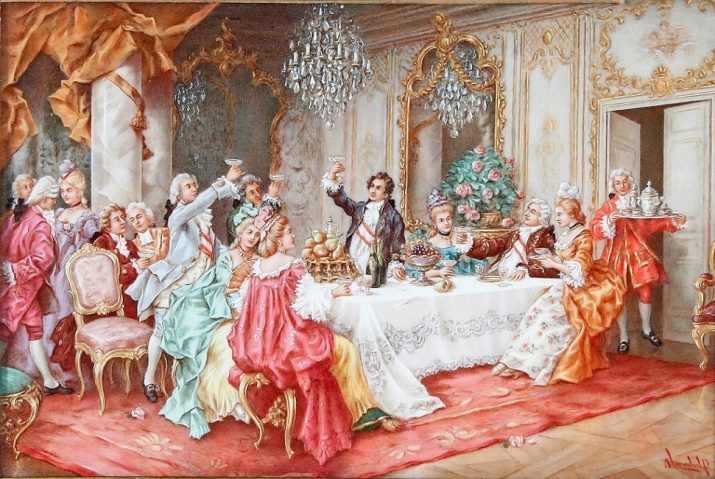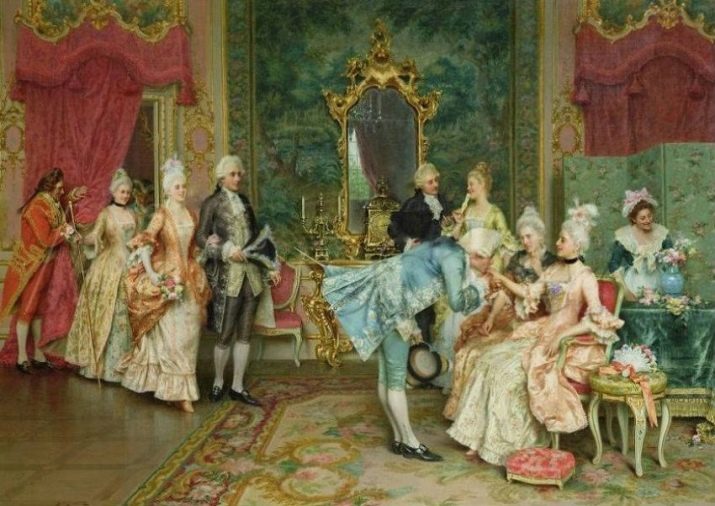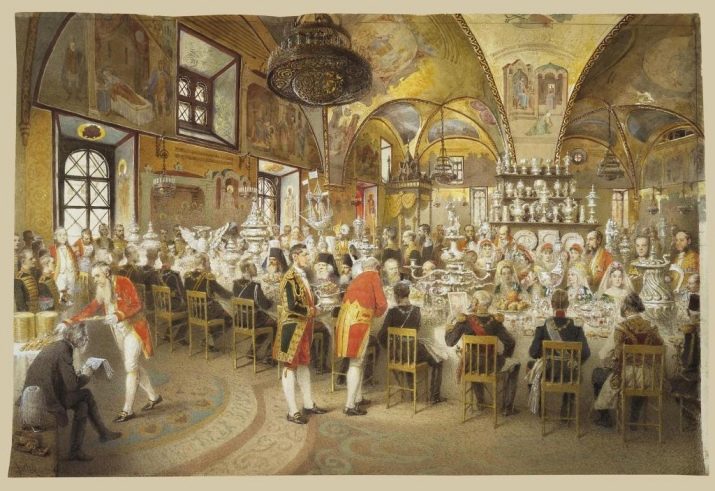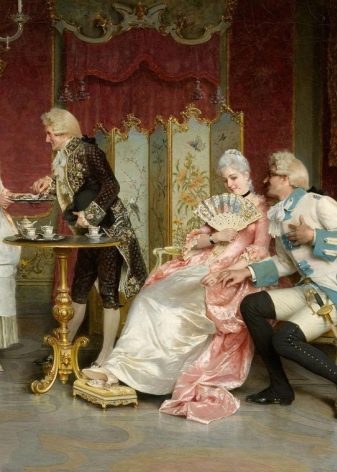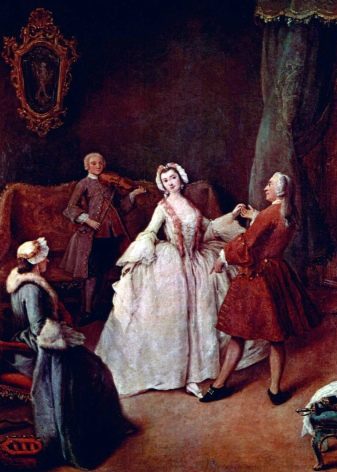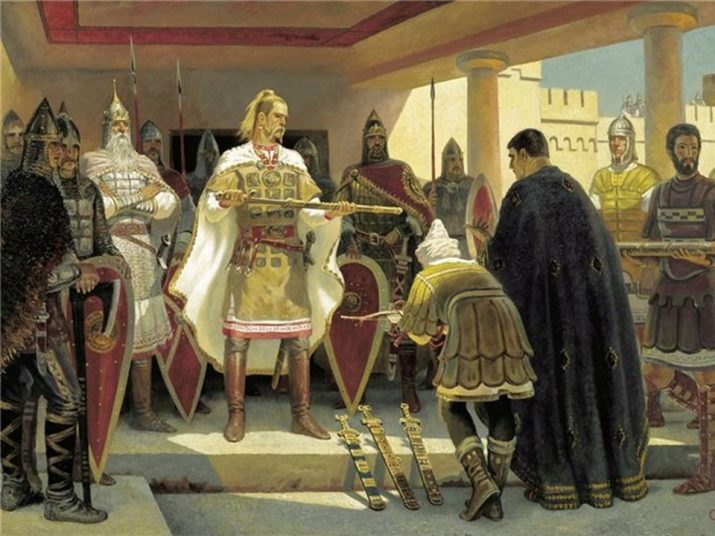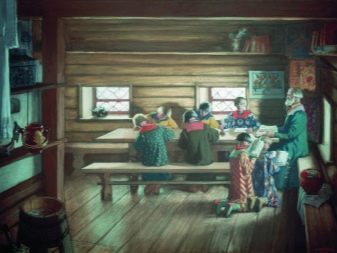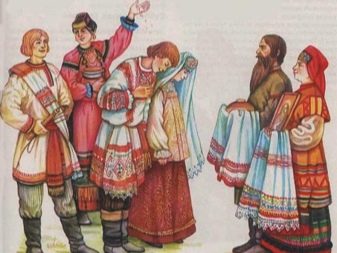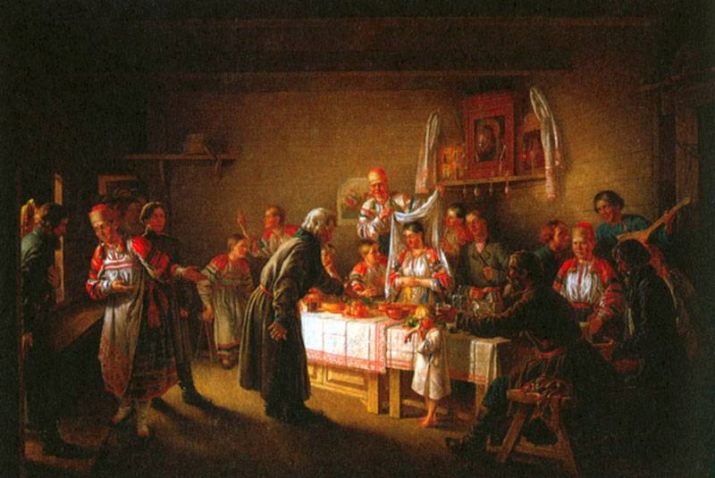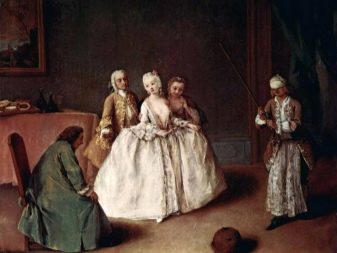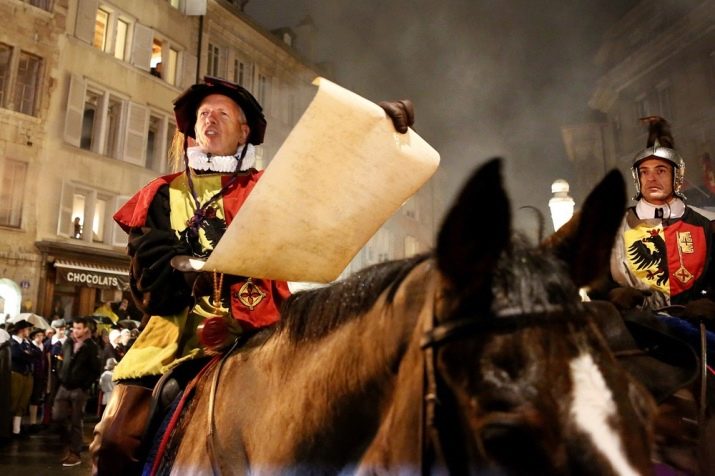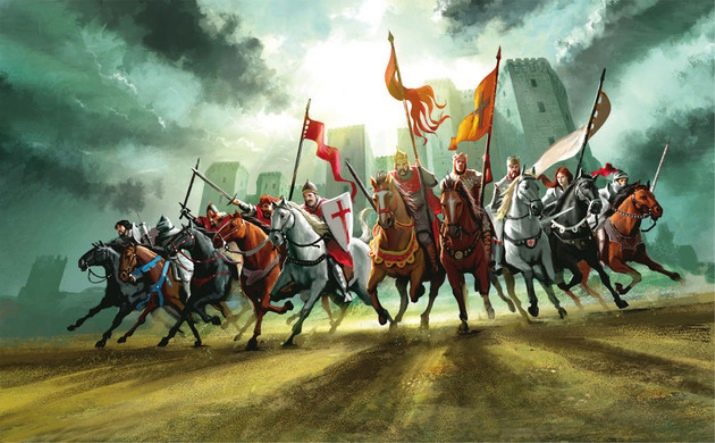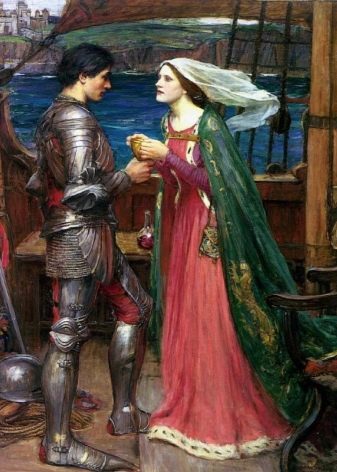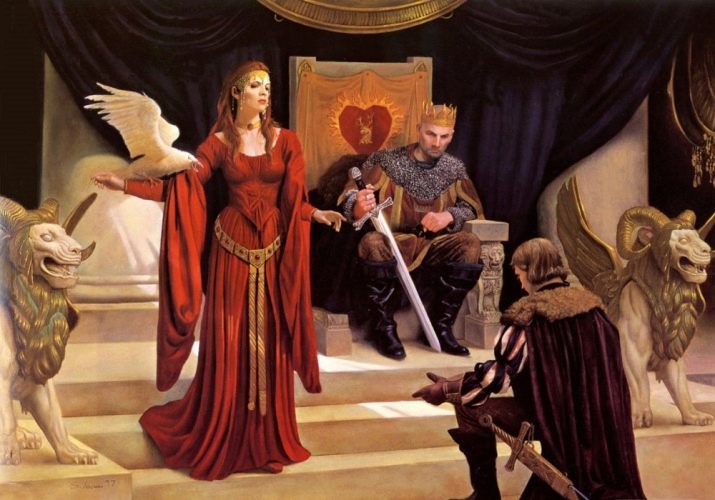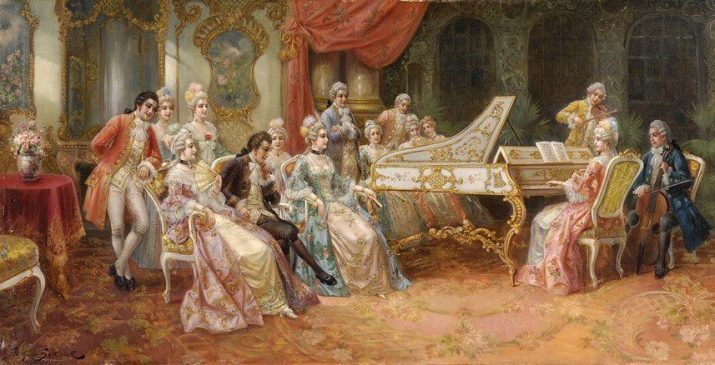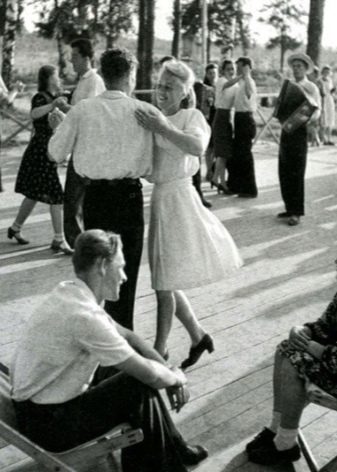The term “etiquette” known to all comes from the French word étiquette - ethics. This is a set of rules for proper behavior in society. The historical roots of the term in its modern format go back to the reign of the French king Louis XIV.
Concept origin
The history of this concept originates in France. This is due to the fact that the term was first used precisely at the court of the French king. Before the next social event, guests were handed out special cards. They were indicated the main provisions of behavior.
This is how the first official code of conduct in a cultural society appeared. Since then, the active development of etiquette in the upper classes began, despite the fact that certain provisions and norms existed in ancient times.
Experts claim that the first unwritten rules worked in Europe as early as the Middle Ages, but they were not fixed anywhere. Guests participating in long feasts were seated in a certain sequence, although at that time there were no cutlery in their modern sense.
France is generally considered to be the birthplace of the concept of “etiquette,” however, some experts claim that the position of the parent country of the above phenomenon is also disputed by England. Despite the emergence of certain norms of behavior, they could not develop properly due to the harsh and cruel conditions of that time. As a result, morality, morality and spirituality have been relegated to second place.
There is evidence that certain rules of good manners appeared in the XIV century within the borders of Italy. The state began to observe cultural personal growth. Social essence began to matter in society.
In the XV century in the countries of Europe began to use personal cutlery. A century later, these attributes became mandatory during the lunches. The use of fork and knife was the impetus for the formation of public European etiquette.
The development and distribution of this effect was particularly influenced by the court ritual. There was a need for the position of master of ceremonies, who carefully monitored the implementation of all necessary instructions and regulations.
Compiled lists of persons who had the right to accompany the monarchs during their walks and other events.
The Age of Enlightenment
The rules of etiquette were especially popular during the Enlightenment. During this period, they moved from the higher strata of the nobility to the rest of the population. The rules have become simpler and more democratic, compared with the manners at court.
The modern meaning of the term has evolved over several centuries and has reached our time. For example, knights, being in the company of close people, removed a helmet. This clearly demonstrated their trust. Now men remove hats in the premises. They also bared their heads in greeting to people passing by.
The tradition of shaking hands when meeting also originates in Europe. People of equal age or position were shaken by a hand, while the higher person was kissed.
The younger one should not be the first to greet him.
Ancient Russia
Historians track the process of etiquette in the territory of Russia since the Pre-Petrovsky period.The etiquette of that time was significantly different from the manners of Europeans. Foreign citizens often perceived the everyday norms of Russian behavior as something wild and even barbaric.
The Byzantine traditions had a great influence on the formation of the rules of behavior in Russia. This state borrowed not only local etiquette, but also national age-old traditions. They went to the Russian lands with the Christian religion. Despite such changes, it was possible to preserve pagan rituals that have come down to modern times.
The second factor that has changed the people's habitual way of life is the influence of the Mongol-Tatar yoke. Some elements of this culture were transferred to the lands of Ancient Russia.
Social status
Great position in society played the position of man. In this sense, the inhabitants of Russia and Western Europe were very similar. Russian people also honored their elders.
A special attitude was to the guests. If an important person came to the house, the owner of the house on the porch personally met her. Younger on the social scale and age were already met in the room of the house, and the equal was welcomed in the passage.
Notable persons of that time walked with a special cane. Crossing the threshold of the building, it was left in the entrance hall. Hats were removed and carried in their hands.
Religion had a huge impact on the norms of behavior. Going inside the house, the guests stopped near the icons and were baptized. Then they made three traditional bows, addressed to the holy images. Next, the guests were supposed to greet the host with a bow. Close people shook hands and hugs.
As soon as the guests left, they did almost the same sequence of actions, baptizing and bowing to the image of the saints. Then they said goodbye to the owner. Blowling, sneezing and coughing at a party was a bad form.
Clothing and appearance
The clothes of Russian men and women during the Middle Ages were not much different. In addition, there was no dimensional grid, all things were free. In the cold season, she was sure to wear sheepskin coats, paddle jackets, fur coats and other warm clothes. Beautiful clothes, decorated with decorative elements, spoke about the high status and wealth of the person. The peasants wore felt boots during the frost, and the nobility put on boots.
According to the rules of good tone, women wore long braids. Braided hair was a required attribute. Loose hair was not worn, it was considered indecent. Men of that time were decorated with magnificent beards and mustaches.
Feast
At the beginning of the feast in Russia, the guests ordered a glass of vodka. She had to be eaten with bread. On the table laid out pre-sliced dishes. Together with them put flatware made of precious metals, however, they had no practical function. These decorations testified to the hospitality and wealth of the host.
The bones were not left on the plate, but put in a separate dish.
Guests of the feast tried to try all the drinks and dishes offered by the hosts, it was considered a sign of special reverence.
Peter's era
In the development of etiquette in the time of Peter I, Western trends began to be vigorously introduced. Has had a significant influence and fashion in Germany, England and Holland. The behavioral norms of the high society of that period changed significantly and changed. Then they switched to ordinary people.
After a while, the influence of the above-mentioned European states changed to French. At that time, in the state rules Queen Elizabeth. Tradition, language, fashion and much more went to the Russian lands.
Social behavior of secular persons acquired the character of sentimentalism. After it successfully transformed into romanticism. People began to be interested in education. Art comes to the fore: painting, music, literature.
Historians note that a sharp decline in the influence of France was noticeable in 1812, after the end of the Patriotic War.
Despite the social restructuring, the fashion of the French language has been preserved.Especially they were interested in ladies from high society.
Norms of behavior in the feudal society of Europe
Known to many, the system of knighthood was born in Europe in the XI century. It significantly influenced the formation of European, and after, and world etiquette. During this period, new rituals and traditions began to emerge that began to literally “soak” into society. This is the time of world famous knightly tournaments and feats in honor of beautiful ladies.
At the same time there was a rite of initiation of men to be knights. A special ceremony was held in connection with the established rules and regulations. Knights invent their personal code and strictly follow it. The rules established by this code become mandatory for warriors. In the treatise indicated not only the norms of behavior, but also the style of clothing, and the subject of the symbols used.
Gender Inequality
In medieval Europe, inequality between men and women was clearly demonstrated. The representatives of the fair sex had much less rights and freedoms, compared with men of that time. Patriarch reigned, and the rights of a strong half of humanity were enshrined at the legislative level. Such a way supported the church.
These restrictions influenced the process of the formation of behavioral norms for men and women.
Knights and ladies
Special rules of etiquette arose as a result of the relations of knights with their lovers. The man practically became the servant of the lady. He fulfilled all the whims and whims of the ladies of the heart. Such a model of behavior existed even if the woman did not share the feelings of the boyfriend, and love remained unresponsive.
To become the beloved lady of a knight, a woman had to meet certain standards. She is bound to be outwardly attractive, sociable and inquisitive. Respected the ability to conduct small talk. Relationships do not depend on marital status
To be considered a real knight, a man must be brave, strong, honest, sincere, hospitable and generous. They showed these and other qualities during battles and numerous tournaments. Knight had to keep his word at all costs. They also organized a magnificent feast, clearly demonstrating generosity.
Presents
The rules of good tone were considered gifts that the knights handed their ladies. The ideal gift is a toilet item (decoration, comb, shawl, and more). If a man became the winner in the tournament, he would surely give the opponent's beloved horse and his weapon as a trophy. The lady had every right to refuse the offering. It spoke of her indifference to the man.
Vows
Knights and ladies sometimes swore to each other. Sometimes they made senseless and stupid things, but they were followed without fail. For example, a man could come up with such conditions: he refused to cut his hair before a certain feat or a significant date.
At this time, the woman could completely refuse to eat.
Rules for courtiers
Representatives of high society had to perfectly follow the rules of etiquette. They put forward higher requirements. In the late Middle Ages, manners were given special importance. Those rules that were adopted several centuries ago have been preserved, transformed and transformed.
In the era of the Enlightenment, the first manuals began to appear, which contained the provisions of the palace ethics. Representatives of the nobility carefully studied textbooks.
The book indicated such provisions:
- The basic rules of the conversation.
- The correct daily routine.
- How to behave during various ceremonies and much more.
The main features of the etiquette of high-ranking persons are the finest details that were of great importance. Comply with all the points in accuracy was a prerequisite. During the balls, the nobility stuck to certain sets of rules and followed them without question.
Due to strict rules, there appeared such a profession as a dance teacher.The teacher taught not only to move correctly, but also introduced students to elegant and refined manners.
Dances of that period were significantly different from what is called dance in modern society. Dominant were not dance movements, but various bows.
Excellent knowledge of the rules of behavior were not only a sign of good tone. Even a minor oversight in this area could lead to undesirable consequences. Most often, people lost their status, but there were also cases when they lost their lives for the mistake. Everything depended on the seriousness of the offense and the status of the person who was offended by such behavior. The rights and duties of each person at court were laws for which no one had the right to leave.
In addition to excellent manners, the court was obliged to possess such skills:
- Owning a musical instrument.
- Card games.
- Dancing.
- Singing.
- Drawing.
- Foreign language skills.
A little more about the history of etiquette can be found in the video below.
Era of the USSR
In the Soviet era, there was also a certain etiquette. The rules were notable for their particular democracy and simplicity. They lacked that mannerism and pathos, which was inherent in European etiquette. Became common family and unofficial visits.
In place of secular receptions, characteristic of the XVIII-XIX centuries, dance floors have come. It was at the dance girls most often met with the guys.
Clothing, jewelry and other accessories were concise and simple. This concerned both everyday and ceremonial style.
